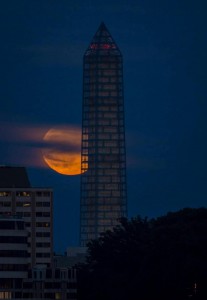Tonight (and even tomorrow) is a great opportunity to shoot the super moon. This one will be the closest in 68 years, and it’ll be another 18 years before it’s this big again. As a result, the phenomena provides a great opportunity for astrophotography.
Here are our tips to photograph this special event:
Location, location, location
Photograph the moon with land-based objects or people for reference. Don’t make the mistake of photographing the moon by itself with no reference to anything, I’ve certainly done it myself, but everyone will get that shot. Instead, think of how to make the image creative—that means tying it into some land-based object. It can be a local landmark or anything to give your photo a sense of place.

PHOTOGRAPH BY BILL INGALLS, NASA
Get the longest lens
Get your longest lens (even 600mm if you have one) plus add all your teleconverters. If you just have a 18-55, shoot at 55mm.
Get the right exposure
The moon is very bright, so in fact you don’t need long exposure. When you’re looking at a full moon, it’s technically daylight on the moon, so shoot with the same exposure you would in daylight on Earth. Leaving your shutter open too long will result in an overexposed moon that’s too bright, with no lunar detail. Plus the moon will move, so you will have a blurry moon in your photo.
Crop later
Do not use your digital zoom, especially if you’re using your phone. You can always crop later, which will be higher quality then “zooming” with your phone.


